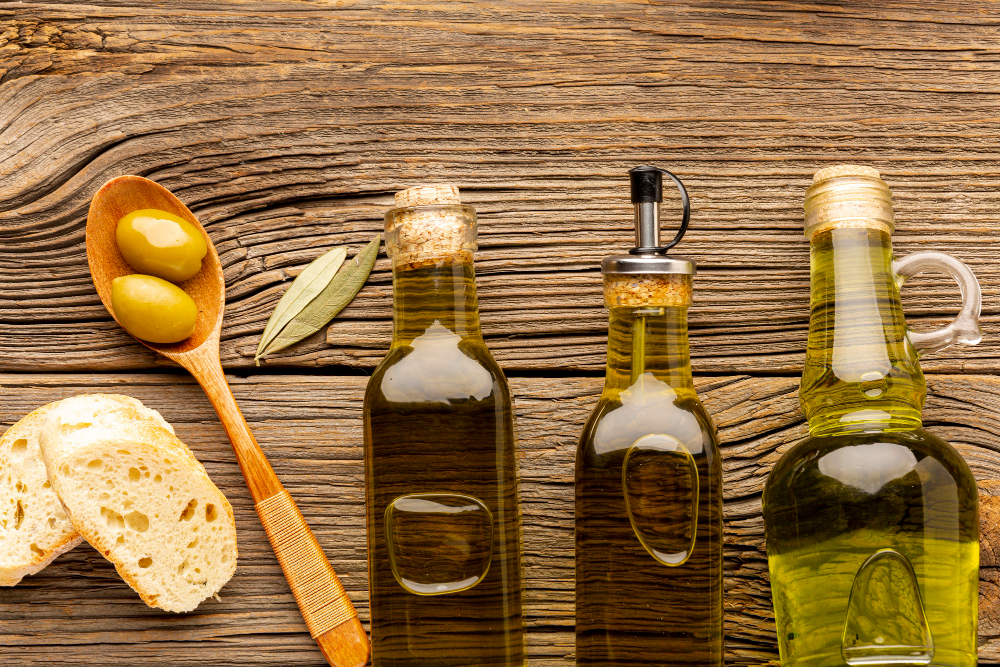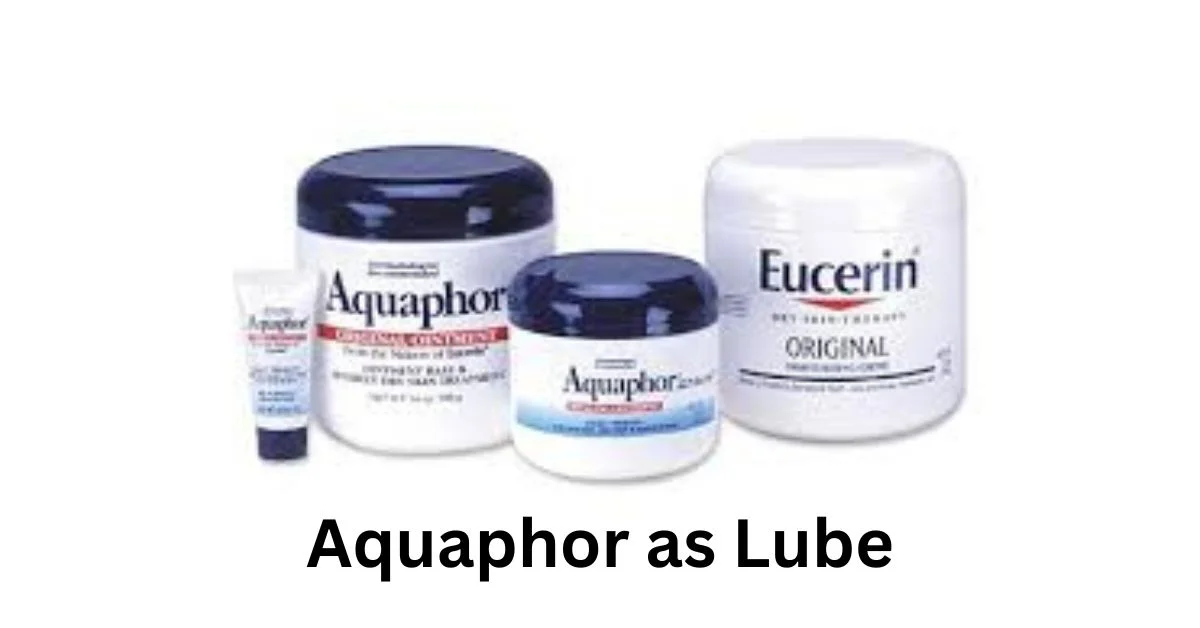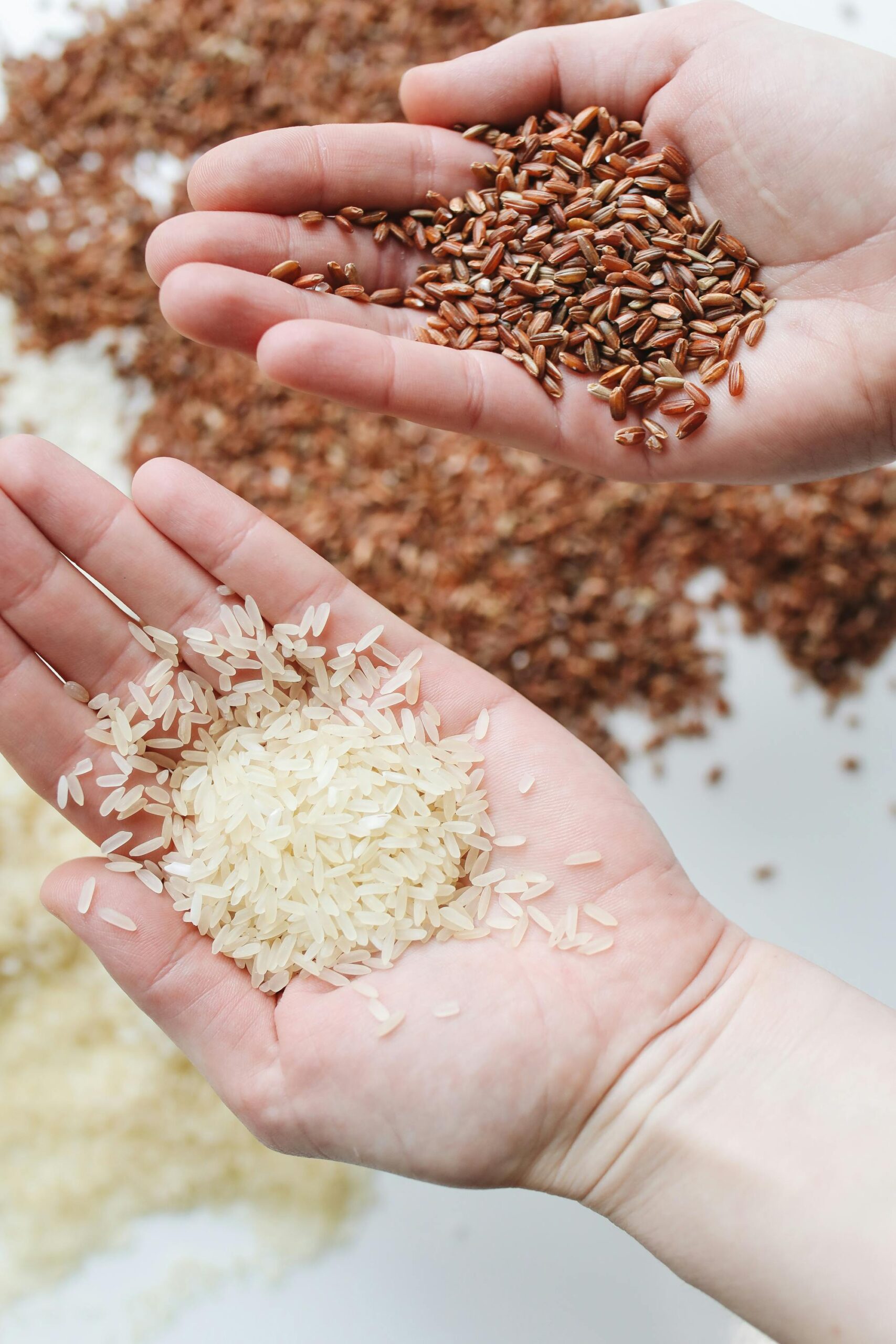Health
Exploring the Health Benefits: Rapeseed Oil vs Olive Oil

When it comes to cooking oils, there are countless options available on the market. Two popular choices that often find themselves in the spotlight are rapeseed oil vs olive oil. Both of these oils have their own unique characteristics and health benefits, making them worthy contenders for a place in your pantry.
In this blog post, we will dive deep into the nutritional profiles of rapeseed oil vs olive oil, exploring their various cooking uses and discussing their respective health benefits. We’ll also compare their key characteristics such as origin, taste, and smoke point. To provide you with a comprehensive understanding of these oils, we’ll present expert opinions backed by studies conducted in the field.
So whether you’re a seasoned chef or just looking to make healthier choices in your kitchen, join us as we delve into the world of rapeseed oil versus olive oil – two heavyweight contenders vying for superiority when it comes to both flavor and nutrition.
Nutritional Profile
When it comes to comparing rapeseed oil and olive oil, one important aspect to consider is their nutritional profile. Both oils offer unique benefits that can contribute to a healthy diet.
Rapeseed oil is known for its high content of monounsaturated fats, which are considered heart-healthy fats. It also contains omega-3 fatty acids, which have been shown to support brain health and reduce inflammation in the body. Additionally, rapeseed oil is rich in vitamin E, an antioxidant that helps protect cells from damage caused by free radicals.
On the other hand, olive oil is renowned for its abundance of monounsaturated fats as well. These fats have been linked to reducing bad cholesterol levels and improving heart health. Olive oil also contains antioxidants called polyphenols, which may help fight inflammation and oxidative stress in the body.
Both rapeseed oil and olive oil provide valuable nutrients that can enhance your overall well-being. Incorporating these oils into your cooking routine can be a simple yet impactful way to boost your nutritional intake!
Rapeseed Oil
Rapeseed oil, also known as canola oil, has gained popularity in recent years for its health benefits and versatile culinary uses. This golden-hued oil is derived from the seeds of the rapeseed plant, which is a member of the Brassica family. It boasts a rich nutritional profile, containing high levels of monounsaturated fats and omega-3 fatty acids.
Not only is rapeseed oil a heart-healthy option due to its high unsaturated fat content, but it also contains essential vitamins such as vitamin E. Its mild flavor makes it suitable for a variety of cooking methods, including sautéing and baking. Whether you’re making roasted vegetables or frying up some crispy chicken tenders, rapeseed oil adds a delightful depth of flavor without overpowering the dish. So why not consider incorporating this versatile and nutritious cooking staple into your culinary repertoire?
Olive Oil
Olive oil, a staple in Mediterranean cuisine, is not only delicious but also offers numerous health benefits. It is rich in monounsaturated fats and contains antioxidants that can help reduce inflammation and lower the risk of chronic diseases.
In addition to its nutritional value, olive oil is incredibly versatile in the kitchen. Its delicate flavor makes it perfect for drizzling over salads or dipping bread, while its high smoke point allows for sautéing and roasting at higher temperatures. Whether you’re looking to add depth of flavor or promote heart health, olive oil is a great choice for both cooking and enhancing your meals!
Cooking Uses
When it comes to cooking, both rapeseed oil and olive oil have their own unique qualities that make them versatile in the kitchen. Rapeseed oil is a great choice for frying due to its high smoke point, which means it can withstand high heat without breaking down. This makes it ideal for deep-frying or stir-frying dishes.
On the other hand, olive oil is perfect for searing meats or sautéing vegetables. Its rich flavor adds depth to dishes and enhances the overall taste. Whether you’re making a stir-fry or searing a juicy steak, these oils offer different cooking experiences but equally delicious results. So go ahead and experiment with both in your recipes!
Frying
Frying is a common cooking method that adds a delicious crispiness to our favorite foods. When it comes to choosing the right oil for frying, both rapeseed oil and olive oil are popular choices.
Rapeseed oil has a high smoke point, making it ideal for deep-frying or pan-frying at high temperatures. Its neutral flavor allows the natural taste of the food to shine through without overpowering it. On the other hand, olive oil has a lower smoke point compared to rapeseed oil. So it’s better suited for shallow frying or sautéing over medium heat. The rich and distinctive flavor of olive oil can enhance the taste of fried dishes, adding an extra layer of complexity. Whether you opt for rapeseed oil or olive oil when frying largely depends on your personal preferences and the specific recipe you’re preparing!
Searing
Searing is a cooking technique that involves quickly browning the surface of food at high heat. It’s a fantastic way to lock in flavor and create a delicious crust on meats, fish, or vegetables. When it comes to using rapeseed oil versus olive oil for searing, both oils have their own unique characteristics that can enhance your culinary creations.
Rapeseed oil is known for its high smoke point, making it ideal for searing. Its mild flavor allows the natural taste of the ingredients to shine through without overpowering them. On the other hand, olive oil offers a distinctive fruity taste and adds depth to dishes when used for searing. Its lower smoke point means you should be cautious with heat levels to avoid burning.
Searing is an excellent cooking technique that can elevate your meals by adding color and depth of flavor. Whether you choose rapeseed oil or olive oil depends on your personal preferences and desired outcome. Experiment with both oils to discover which one suits your palate best!
Health Benefits
Rapeseed Oil:
When it comes to health benefits, rapeseed oil is a winner. It contains low levels of saturated fat and high levels of monounsaturated fats, which are known for their heart-healthy properties. These fats can help to lower bad cholesterol levels and reduce the risk of heart disease. Rapeseed oil also boasts an impressive omega-3 fatty acid content, which is essential for brain function and reducing inflammation in the body.
Olive Oil:
Olive oil has long been hailed as one of the healthiest oils out there, and for good reason. Like rapeseed oil, it is rich in monounsaturated fats that can improve heart health by lowering bad cholesterol levels. It is also packed with antioxidants called polyphenols, which have anti-inflammatory effects on the body. Additionally, olive oil has been linked to a reduced risk of chronic diseases such as cancer and diabetes due to its protective compounds.
Both rapeseed oil and olive oil offer numerous health benefits that make them excellent choices for your cooking needs.
Rapeseed Oil
Rapeseed oil, also known as canola oil, has been gaining popularity in recent years for its numerous health benefits. This versatile cooking oil is derived from the seeds of the rapeseed plant and boasts a rich nutritional profile. It is low in saturated fat and high in monounsaturated fats, making it heart-healthy and beneficial for cholesterol levels.
Not only does rapeseed oil possess impressive nutritional qualities, but it also stands out for its cooking versatility. With a high smoke point of around 400°F (204°C), this oil is ideal for frying and sautéing at high temperatures without breaking down or releasing harmful toxins. Its mild flavor makes it suitable for various dishes, whether you’re stir-frying vegetables or pan-searing a succulent piece of fish. Get ready to explore the endless culinary possibilities with this healthy cooking staple!
Olive Oil
Olive oil, a staple in Mediterranean cuisine, has gained popularity worldwide due to its numerous health benefits. This golden liquid is extracted from the fruit of the olive tree and offers a unique flavor profile that enhances dishes with its rich aroma and smooth texture.
Not only does olive oil add depth to your meals, but it also contains high levels of monounsaturated fats, which are heart-healthy and can help lower bad cholesterol. Additionally, this versatile oil is packed with antioxidants that protect against inflammation and oxidative stress, potentially reducing the risk of chronic diseases such as cancer and Alzheimer’s. With its many qualities, it’s no wonder why olive oil is considered one of nature’s superfoods.
Comparison of Characteristics
When it comes to comparing the characteristics of rapeseed oil and olive oil, there are several factors to consider. First, let’s explore their origins and tastes. Rapeseed oil is derived from the seeds of the rapeseed plant and has a mild, nutty flavor. On the other hand, olive oil is made from pressing olives and can have varying flavors depending on its quality and origin.
Another important characteristic to consider is the smoke point of these oils. The smoke point refers to the temperature at which an oil starts to break down and produce smoke. Rapeseed oil has a higher smoke point compared to olive oil, making it suitable for high-temperature cooking methods like frying and searing.
Origin and Taste
Rapeseed oil, also known as canola oil, is derived from the seeds of the rapeseed plant. It has a mild and neutral flavor that makes it versatile for various cooking applications. On the other hand, olive oil comes from pressing olives, primarily grown in Mediterranean countries like Spain, Italy, and Greece. Its taste can range from subtle to robust depending on factors such as the variety of olives used and the production process.
The origin of these oils plays a significant role in their distinct flavors. Rapeseed oil’s mild taste allows it to blend well with different ingredients without overpowering them. This makes it ideal for baking or making salad dressings where you want other flavors to shine through. In contrast, olive oil offers a rich and distinctive flavor profile that adds depth to dishes like pasta sauces or drizzled over roasted vegetables. The diverse tastes offered by both oils provide ample opportunities to experiment with flavors in your culinary creations!
Smoke Point
The smoke point is an important factor to consider when choosing cooking oils. It refers to the temperature at which an oil starts to break down and produce smoke. This breakdown can result in a loss of flavor and beneficial compounds, as well as the creation of potentially harmful substances.
Different oils have different smoke points, with rapeseed oil vs olive oil falling into distinct categories. Rapeseed oil has a higher smoke point compared to olive oil, making. It more suitable for high-temperature cooking methods such as frying and searing. Its ability to withstand higher heat without smoking or burning makes. It ideal for achieving that perfect crispy texture on your favorite fried dishes. On the other hand, olive oil has a lower smoke point. Making it better suited for low-to-medium heat cooking techniques like sautéing or drizzling over salads.
Considering the importance of maintaining the quality and taste of your food while avoiding harmful byproducts. Understanding each oil’s respective smoke point can help you make informed choices about which one best suits your culinary needs.
Expert Opinions and Studies
Experts in the field of nutrition and health have conducted numerous studies to compare the benefits of rapeseed oil vs olive oil. These studies aim to provide insights into which oil is better for our overall well-being. One study found that rapeseed oil contains higher levels of omega-3 fatty acids, which are essential for heart health. Additionally, it has been suggested that rapeseed oil may aid in reducing inflammation in the body.
On the other hand, olive oil has long been praised for its rich content of monounsaturated fats. which can help lower bad cholesterol levels and reduce the risk of heart disease. Some experts also believe that olive oil’s high antioxidant content contributes to its potential anti-inflammatory properties. These findings highlight how both oils bring unique nutritional values to our diets.
Expert opinions and studies continue to shed light on the various health benefits associated with both rapeseed and olive oils. It’s important to consider these findings alongside personal dietary needs when making choices about cooking oils in order to optimize our overall health and well-being.
Conclusion
After exploring the nutritional profile, cooking uses, health benefits, and characteristics of rapeseed oil vs olive oil, it is clear that both oils have their own unique advantages.
Rapeseed oil stands out for its high omega-3 fatty acid content. which has been linked to various health benefits. Such as reducing inflammation and promoting heart health. It also has a higher smoke point than olive oil, making it more suitable for frying and searing at high temperatures.
On the other hand, olive oil is known for its rich antioxidant content and association with the Mediterranean diet. It offers numerous health benefits including improved cardiovascular health and reduced risk of chronic diseases like cancer and Alzheimer’s disease.
When it comes to taste, rapeseed oil has a mild flavor that allows the natural flavors of food to shine through. Olive oil, on the other hand, boasts a distinct fruity aroma and flavor that can enhance the taste of dishes.
In terms of origin, rapeseed oil is often sourced locally in regions where canola plants are grown abundantly. Olive oil predominantly hails from Mediterranean countries like Spain or Italy.
Both oils have their place in cooking depending on individual preferences and culinary needs. Whether you’re sautéing vegetables or dressing a salad, choosing between rapeseed oil or olive oil ultimately boils down to personal preference.
Fashion
Aquaphor as Lube: What You Need to Know Before Trying It

Introduction
Aquaphor has long been a staple in many households, known for its ability to soothe and protect dry, irritated skin. But a new curiosity has emerged: can this versatile ointment double as an intimate lubricant? This question has sparked interest among those looking for multipurpose products and alternatives to specialized lubricants. In this article, we will explore the feasibility of using Aquaphor as lube, its safety implications, and what you should consider before making this decision.
Understanding Aquaphor
What is Aquaphor?
Aquaphor is an ointment produced by Eucerin, primarily designed to relieve and protect dry, chapped skin. Its formulation includes a blend of petrolatum, mineral oil, and other emollients that create a barrier on the skin, which helps retain moisture and promote healing.
Key Ingredients and Their Functions
- Petrolatum: Acts as an occlusive agent to lock in moisture.
- Mineral Oil: Helps to soften and smooth the skin.
- Glycerin: A humectant that draws moisture from the environment into the skin.
Intended Uses and Benefits
Aquaphor is commonly used to treat conditions such as eczema, psoriasis, and minor burns. Its gentle formulation makes it a popular choice for sensitive skin areas, but it was never intended for use as a lubricant.
The Question: Can Aquaphor Be Used as Lube?
Common Misconceptions
Many people assume that if a product is good for skin, it must be good for all skin-related uses, including lubrication. However, just because Aquaphor is beneficial for skin care doesn’t mean it’s suitable for intimate areas.
Why People Consider Using Aquaphor as Lube
The idea of using Aquaphor as a lubricant likely stems from its smooth texture and moisturizing properties. People looking for alternatives to commercial lubricants might see Aquaphor as a readily available option.
Overview of Popularity and Curiosity
Curiosity about using Aquaphor as lube reflects a broader trend of seeking multipurpose products and exploring non-traditional uses for everyday items.
Safety Considerations
Ingredient Safety for Intimate Areas
Aquaphor’s ingredients are designed for external skin use and might not be suitable for intimate areas. Petrolatum and mineral oil, while safe for skin, may cause irritation or disrupt the natural balance of sensitive areas.
Potential Risks and Reactions
Using Aquaphor as a lubricant may lead to allergic reactions or infections. The product is not formulated to be used internally and might not provide the same safety and comfort as specialized lubricants.
Hygiene and Sterility Concerns
Aquaphor is not a sterile product, and using it in intimate areas could introduce bacteria or pathogens, increasing the risk of infections. Specialized lubricants are designed with sterility and safety in mind.
Comparing Aquaphor with Specialized Lubricants
Water-Based Lubricants
Water-based lubricants are a popular choice due to their compatibility with condoms and sex toys. They are easy to clean up and generally safe for sensitive skin. Look for products without parabens or glycerin for a more natural option.
Silicone-Based Lubricants
Silicone-based lubricants provide long-lasting lubrication and are water-resistant, making them suitable for various activities. However, they may degrade silicone toys and require careful cleaning.
Oil-Based Lubricants
Natural oils like coconut oil can be used for external lubrication but should not be used with latex condoms, as they can weaken the latex. Oil-based lubes are not recommended for internal use.
Pros and Cons of Using Aquaphor as Lube
Benefits
- Moisturizing Properties: Aquaphor’s ability to hydrate the skin might offer some level of lubrication.
- Availability: Easily accessible in many households.
Drawbacks and Limitations
- Potential Irritation: Not designed for intimate areas, may cause irritation.
- Lack of Sterility: Increases risk of infections.
- Texture Issues: May not provide adequate or lasting lubrication.
Alternatives to Aquaphor for Intimate Lubrication
Best Water-Based Lubricants
- K-Y Jelly: A well-known brand for its gentle formulation.
- Sliquid H2O: Offers a natural, glycerin-free option.
Top Silicone-Based Lubricants
- Pjur Original: Long-lasting and suitable for various activities.
- Astroglide X: Provides a smooth, extended glide.
Safe Natural Oils for Lubrication
- Coconut Oil: Hydrating and naturally antimicrobial but not compatible with latex condoms.
- Almond Oil: A mild, moisturizing option but should be used cautiously.
How to Choose the Right Lubricant
Factors to Consider
- Compatibility: Ensure the lubricant works with condoms and sex toys.
- Personal Sensitivities: Choose a product that suits your skin type and preferences.
Matching Lubricants to Needs and Preferences
Consider what type of activities you’ll be engaging in and choose a lubricant that offers the appropriate level of comfort and effectiveness.
Conclusion
While the idea of using Aquaphor as lube may be intriguing, it’s essential to prioritize safety and effectiveness. Aquaphor is not designed for intimate lubrication and may pose risks such as irritation or infection. Opting for specialized lubricants, whether water-based, silicone-based, or natural oils, ensures a safer and more comfortable experience. Always consider your health and well-being when choosing products for intimate use.
FAQs
What are the risks of using Aquaphor as lube?
Using Aquaphor as a lubricant can lead to irritation, allergic reactions, or infections due to its ingredients and lack of sterility.
Can Aquaphor cause infections or irritation?
Yes, Aquaphor may disrupt the natural balance of intimate areas and increase the risk of infections or irritation.
What are the best alternatives to Aquaphor for lubrication?
Water-based, silicone-based, and safe natural oil lubricants are better alternatives, each offering specific benefits and suitability for different needs.
How do water-based lubes compare to silicone-based lubes?
Water-based lubes are easier to clean and safe for most activities, while silicone-based lubes offer longer-lasting lubrication and are water-resistant.
Are natural oils a safe option for lubrication?
Natural oils like coconut oil can be used for external lubrication but should not be used with latex condoms, as they can weaken the latex.
Health
RAD-150: The Ultimate SARM for Strength and Muscle Gains

Introduction
What is RAD-150?
RAD-150, also known as a selective androgen receptor modulator (SARM), has been making waves in the fitness and bodybuilding communities. Unlike traditional anabolic steroids, RAD-150 is designed to selectively bind to androgen receptors in muscle and bone tissues, thereby promoting muscle growth and strength gains without some of the undesirable side effects associated with steroids.
Why RAD-150 Matters
The increasing interest in RAD-150 can be attributed to its unique benefits over other performance enhancers. Athletes and bodybuilders seek RAD-150 for its potential to enhance muscle mass, improve strength, and aid in fat loss while minimizing adverse effects on other body systems.
Understanding SARMs
What Are Selective Androgen Receptor Modulators (SARMs)?
SARMs are a class of compounds that, similar to anabolic steroids, target androgen receptors but with greater specificity. This specificity allows them to offer muscle-building benefits while avoiding some of the broader side effects typically associated with steroids.
How SARMs Work
SARMs like RAD-150 bind selectively to androgen receptors in specific tissues. This selective binding helps in promoting muscle growth and strength without affecting other parts of the body, making them a popular choice for those looking to enhance physical performance.
RAD-150 vs. Other SARMs
Comparing RAD-150 with RAD-140
RAD-150 and RAD-140 (Testolone) are often compared, as both are used to enhance muscle mass and strength. RAD-150 is noted for its improved binding affinity to androgen receptors, potentially offering more significant gains with fewer side effects.
Advantages Over Traditional Steroids
Compared to traditional anabolic steroids, RAD-150 is believed to have a better safety profile. It selectively targets muscle and bone tissue, potentially reducing risks associated with hormonal imbalances and other systemic issues.
Benefits of RAD-150
Enhanced Muscle Growth
RAD-150 is particularly noted for its ability to enhance muscle hypertrophy. Users often report significant gains in muscle size and strength, which makes it a sought-after supplement for bodybuilders and athletes.
Improved Strength and Performance
In addition to muscle growth, RAD-150 is reputed to improve strength and overall physical performance. This makes it beneficial for both athletes looking to gain a competitive edge and bodybuilders aiming for peak performance.
Fat Loss Support
RAD-150 may also aid in fat loss. Its muscle-building effects can boost metabolism, helping users burn more calories and reduce body fat.
Cycling RAD-150
Why Proper Cycling is Important
Cycling refers to the practice of using RA’D-150 in structured phases, alternating between periods of use and non-use. Proper cycling is crucial to maximize gains, maintain the compound’s effectiveness, and minimize potential side effects.
Typical RAD-150 Cycle
A typical RA’D-150 cycle might last 8-12 weeks, followed by a break period. This approach helps in preventing the body from adapting too quickly to the compound, which could diminish its effectiveness.
Post-Cycle Therapy (PCT)
Post-Cycle Therapy (PCT) is an essential component after completing a RA’D-150 cycle. PCT helps in restoring natural hormone levels and maintaining gains achieved during the cycle.
Dosage and Administration
Recommended Dosage
The recommended dosage for RA’D-150 varies depending on individual goals and experience. However, a common dosage range is between 10-20 mg per day. Starting with a lower dose and gradually increasing is often recommended to assess tolerance.
Administration Tips
RA’D-150 is usually administered orally in the form of a liquid or capsule. Consistency in taking the compound, along with proper cycling and dosage, is key to achieving the desired results.
Side Effects and Safety
Potential Side Effects
While RA’D-150 is considered safer than traditional steroids, it can still cause side effects. Common side effects may include changes in hormone levels, potential liver strain, and mood changes. It’s important to monitor these effects and consult with a healthcare provider.
Safety Precautions
To ensure safety while using RAD-150, adhere to recommended dosages, cycle appropriately, and undergo regular health check-ups. Staying informed about potential risks and addressing them promptly is crucial.
Legal and Regulatory Status
Is RA’D-150 Legal?
The legality of RA’D-150 varies by country. In many places, it is classified as a research chemical and is not approved for human consumption. Users should be aware of their local regulations and ensure compliance to avoid legal issues.
Regulations and Compliance
Understanding and adhering to regulations related to SARMs is essential for both legal and health reasons. It’s important to purchase RA’D-150 from reputable sources and to stay updated on regulatory changes.
Expert Insights and Testimonials
What Experts Say
Experts in the field of sports medicine and bodybuilding often discuss the benefits and risks of using SARMs like RA’D-150. Their insights can provide valuable information on how to use the compound effectively and safely.
User Experiences
Many users share their experiences with RA’D-150 in online forums and reviews. These testimonials can offer practical insights into the compound’s effectiveness and potential side effects.
Conclusion
RAD-150 offers significant benefits for muscle growth, strength enhancement, and fat loss. Proper usage and cycling are key to maximizing these benefits while minimizing side effects.
For those considering RAD-150, it’s important to weigh the benefits against potential risks. Consulting with healthcare professionals and adhering to recommended practices can help in achieving optimal results.
FAQs
What is RA’D-150 used for?
RA’D-150 is used to enhance muscle growth, strength, and performance, and may also support fat loss.
How long should a RA’D-150 cycle last?
A typical RA’D-150 cycle lasts between 8-12 weeks, followed by a break period.
Are there any common side effects of RA’D-150?
Common side effects may include changes in hormone levels, potential liver strain, and mood changes.
Is RA’D-150 legal?
The legality of RA’D-150 varies by country. It is often classified as a research chemical and may not be approved for human consumption in some regions.
What is Post-Cycle Therapy (PCT)?
Post-Cycle Therapy (PCT) is a regimen used after completing a RA’D-150 cycle to help restore natural hormone levels and maintain gains.
Health
The Rice Purity Test: A Deep Dive into Its Significance and Impact

The Rice Purity Test: A Deep Dive into Its Significance and Impact :
The Rice Purity Test has become a cultural phenomenon, particularly among college students and young adults. But what exactly is this test, and why has it garnered so much attention.The Rice Purity Test is a self-assessment survey consisting of 100 questions that cover various aspects of personal behavior, ranging from innocent activities to more risqué experiences. Participants mark the activities they have not engaged in, resulting in a “purity score” out of 100, where a higher score indicates a higher level of innocence.
Brief History of the Rice Purity Test :
Originally created by students at Rice University in Houston, Texas, the Rice Purity Test was intended as a fun way to bond with peers and initiate conversations about life experiences. Over the years, it has evolved and spread beyond college campuses, becoming a popular tool for self-reflection and social interaction.
Understanding the Rice Purity Test :
Purpose and Origins
The primary purpose of the Rice Purity Test is to provide a light-hearted way for individuals to reflect on their life experiences and compare them with those of others. While it started as a collegiate tradition, its appeal has broadened due to the rise of social media and the internet.
Who Takes the Rice Purity Test?
While initially popular among college students, the Rice Purity Test is now taken by a diverse range of people. High school students, young adults, and even older individuals participate out of curiosity or for nostalgic reasons.
How to Take the Test
The test is available online on various websites. Participants answer “yes” or “no” to each question, and the total number of “no” responses determines the purity score. The process is straightforward and can be completed anonymously.
Categories of Questions
The Rice Purity Test covers a wide range of topics, divided into several categories:
Social and Personal Conduct
Questions in this category assess general behavior in social settings, such as attending parties, making prank calls, or pulling an all-nighter.
Sexual Behavior
These questions delve into romantic and sexual experiences, from first kisses to more intimate encounters.
Substance Use
Participants are asked about their use of alcohol, tobacco, and drugs, reflecting their experiences with substance consumption.
Academic and Legal Issues
This category includes questions about cheating on tests, getting arrested, or facing other legal troubles.
Relationship Dynamics
Questions here explore the complexities of relationships, including dating, breakups, and unrequited love.
High Scores vs. Low Scores
A high score signifies a more sheltered or cautious lifestyle, while a low score suggests a willingness to explore and take risks. Neither score is inherently good or bad; they simply reflect different life paths.
What Your Score Says About You
Your score can offer insights into your personality and life choices. It might indicate your openness to new experiences, your adherence to societal norms, or your adventurous spirit.
Cultural Impact of the Rice Purity Test
Popularity in Colleges and Universities
The test remains a staple on college campuses, often used during orientation weeks or dormitory bonding sessions. It serves as an icebreaker and a way to foster community spirit.
Influence on Social Media
The Rice Purity Test has seen a resurgence on platforms like TikTok, Instagram, and Twitter, where users share their scores and reactions, sometimes leading to viral trends.
Rice Purity Test Memes
The humorous and sometimes absurd nature of the questions has spawned a variety of memes, adding to the test’s appeal and reach.
Psychological Perspectives
Why People are Fascinated by Purity Tests
Purity tests tap into our curiosity about ourselves and others. They provide a structured way to reflect on personal experiences and can spark interesting conversations.
The Impact on Self-Perception
Taking the test can influence how individuals view their own behaviors and decisions, sometimes leading to introspection or even changes in behavior.
Comparing Scores with Friends
Comparing scores with peers can be a fun and enlightening activity, highlighting similarities and differences in life experiences and fostering deeper connections.
Criticisms and Controversies
Privacy Concerns
Sharing purity test scores can lead to privacy issues, especially if individuals feel pressured to disclose personal information.
Potential for Misinterpretation
The simplicity of the test can lead to misunderstandings about what the scores truly represent, potentially resulting in judgment or stigma.
Ethical Considerations
There are ethical concerns regarding the pressure to conform or the potential for shaming based on test results. It’s important to approach the test with a healthy mindset.
Modern Adaptations and Alternatives
Updated Versions of the Rice Purity Test
Newer versions of the test include updated questions that reflect contemporary societal norms and issues, making them more relevant to today’s participants.
Other Popular Online Purity Tests
There are many other purity tests available online, each with its own unique focus and set of questions, catering to different audiences and interests.
The Future of Online Quizzes
As technology and social norms evolve, online quizzes like the Rice Purity Test will likely continue to adapt, offering fresh ways to explore personal and social behaviors.
Taking the Rice Purity Test Responsibly
Tips for a Healthy Perspective
Remember that the test is meant to be fun and reflective, not a definitive judgment of character. Use it as a tool for self-exploration, not self-criticism.
Discussing Your Results
If you choose to share your results, do so with people you trust and who will respect your experiences without judgment.
Avoiding Peer Pressure
It’s important to take the test at your own pace and comfort level. Don’t let peer pressure influence your answers or your feelings about your score.
The Role of Purity Tests in Self-Discovery
Using the Test for Personal Insight
The questions can prompt self-reflection on past decisions and future goals, helping you understand yourself better.
Growth and Maturity Reflected in Scores
As people mature, their scores may change, reflecting their evolving life experiences and perspectives.
Embracing Your Results
Whether your score is high or low, embrace it as part of your unique journey. Use it as a starting point for personal growth and understanding.
How to Discuss Purity Tests in Relationships
Conversations with Partners
Discussing purity tests with a partner can open up meaningful conversations about values, experiences, and boundaries.
Navigating Different Scores
Different scores can lead to differences in experiences and perspectives. Use these differences to learn from each other and build a stronger relationship.
Building Understanding and Respect
Respect each other’s histories and choices. A purity test score is just one aspect of who you are.
Fun Facts About the Rice Purity Test
Strange and Interesting Questions
Some questions on the test are quirky and unexpected, adding to the fun and intrigue of taking it.
Unexpected Trends in Scores
Scores often vary by region, culture, and age group, revealing interesting trends and patterns.
Celebrity Purity Scores
There’s a playful curiosity about how celebrities might score, though these are purely speculative and part of the fun.
Resources for Further Exploration
Books and Articles on Purity and Self-Assessment
There are numerous resources available for those interested in deeper exploration of purity, self-assessment, and related psychological concepts.
Online Communities and Forums
Joining online communities can provide support and shared experiences, enhancing your understanding and connection with others who have taken the test.
Psychological Research on Purity Tests
Academic studies on purity tests and their effects can offer valuable insights into their psychological and social implications.
Conclusion
The Rice Purity Test, with its blend of fun and introspection, remains a popular tool for self-discovery and social connection. Whether you take it for entertainment or insight, it offers a unique window into your life experiences and those of others.
-

 Fashion2 years ago
Fashion2 years agoExploring Purenudism: Embracing Body Positivity and Freedom
-

 Shops1 year ago
Shops1 year agoStaples Store Hours: What Time Does Staples Open And Close?
-

 Shops2 years ago
Shops2 years agoWalmart Vision Center Hours
-

 Shops1 year ago
Shops1 year agoWalgreen Pharmacy Hours: What Time Does It Open & Close?
-

 Shops1 year ago
Shops1 year agoPublix Pharmacy Hours and Locations
-

 Entertainment2 years ago
Entertainment2 years agoThothub.lol: The Digital Realm of Entertainment
-

 Business2 years ago
Business2 years agoDesigner Clothing: Making a Statement
-

 Shops1 year ago
Shops1 year agoWalmart Deli Open & Close Hours
